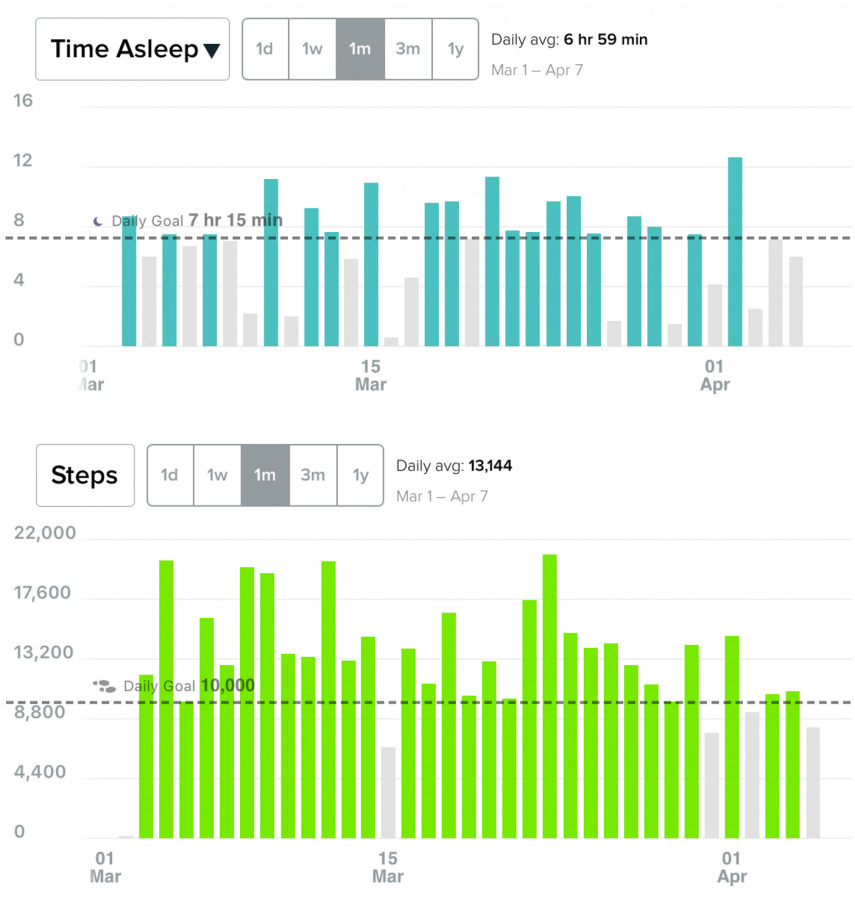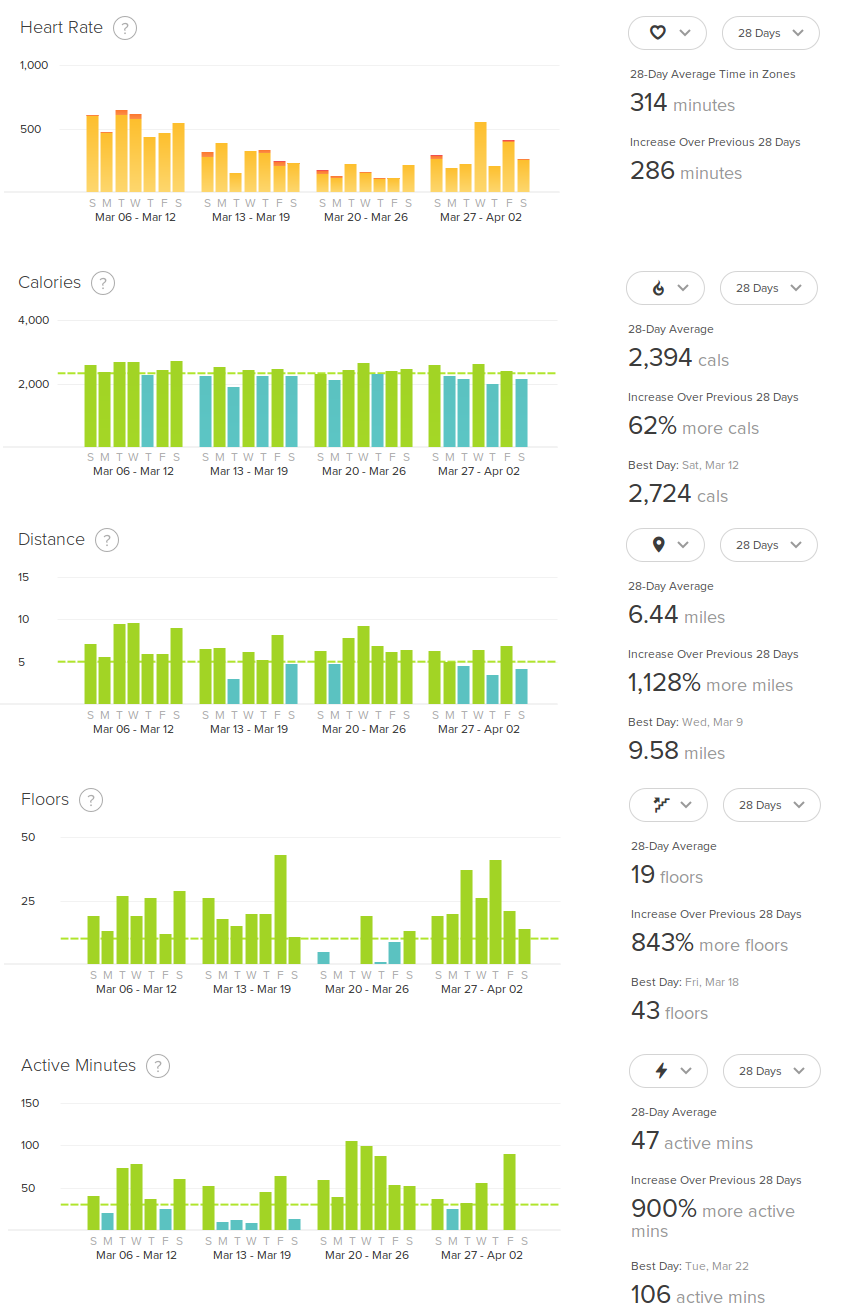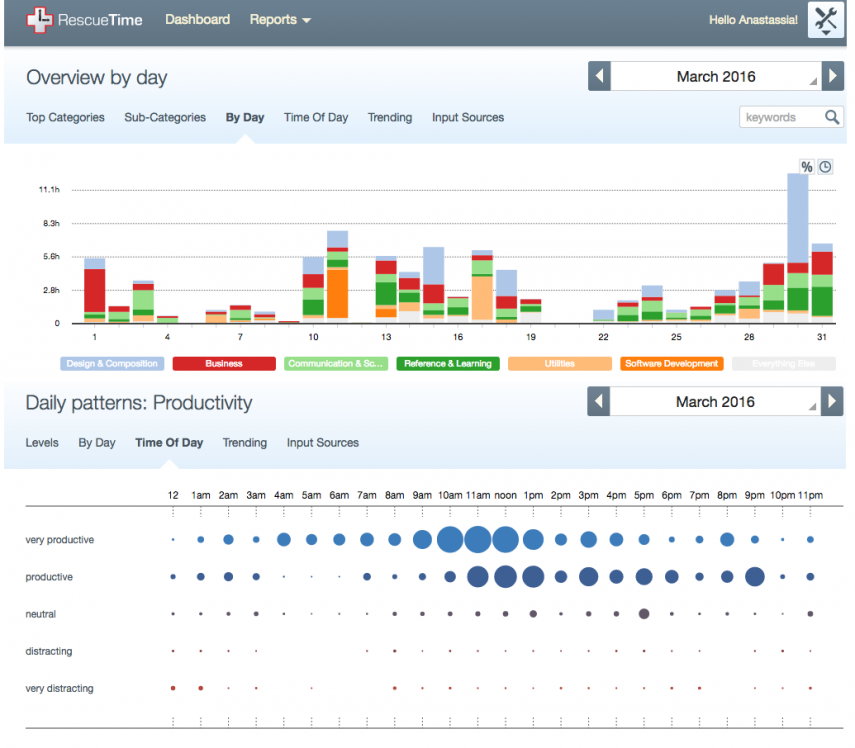If you could track minute-by-minute data on yourself, would you? by Anastassia B. '16
4 Weeks of sleep, activity, heartrate, and computer usage data reveals something
Study: Continuous Data Stream of MIT Student Reveals Something
Department of Physical Education | Department of Biology
Massachusetts Institute of Technology, Cambridge, MA 02139
INTRODUCTION
Recruitment of Volunteer Human Subject
“Alright, that concludes the cool-down stretches, you guys can sit down.”
As Coach Matthew cleared out the jump ropes, medicine balls, and floor ladders from exercise stations cycling around the room, MIT students collectively sighed and picked up their nutrition handbooks for the discussion portion of the course.
I lowered myself onto the worn green plush of the yoga mats blanketing the cold floor. We were in the Du-Pont Multipurpose Room, which, like the Room Of Requirement, always provided the empty space and mirrors necessary for us to notice that our form could use improvement. That, and it was also impossible to ever find and to get into, being at the end of a winding series of inaccessible, one-directional, and mostly locked doors connecting the 5 buildings which make up our complex recreational facility. MIT requires 4 PE classes for graduation, which explained the large fraction of 8th semester seniors taking “Sports Nutrition and Fitness for Athletes” this particular rainy evening.
“Now, before we talk about micronutrients, I want to see who is interested in demo-ing a Fitbit for the remaining duration of this course? We are giving the opportunity to wear them for two weeks to see if you like it.”
…
Oh my gosh.
… free…Free personal data collection? (Ō̥̥̥̥̥̥̥ ԑ Ō̥̥̥̥̥̥̥ ૢ)
I couldn’t fathom what I wanted more in that moment than a continuous data stream documenting my existence. I need to interject here that this post is not about the issues of data privacy and other personal information concerns, but simply one person using their own data for their own delight. What follows is the compilation of a month’s worth of tracking data on my sleeping variance, physical activity, and optimized work habits. Interpretations and extrapolations to the general MIT student body are exercises left up to the reader and beyond the scope of this unfunded research.
RESULTS
Sleep and Movement Meet Requirements for Functioning
For the month of March, I got an average of 7 hours of sleep per night, and even walked outside every day (Figure 1). March is notorious for pre-spring break exams/reports and post-spring break reports/exams, made possible by a brief cushioning period of beach-side relaxation or visit home in which one gratefully devours all available comfort foods and hibernates with their beloved childhood blanket. As an average value, 7 hours is not a startling result. However, a closer inspection points to a significant variance present in day-to-day sleep. Not only does sleep seem to oscillate between deprivation and recovery conditions, but additional examination of minute-by-minute data reveals that the days passing minimum requirements often do so through the addition of non-continuous segments (“naps”) instead of uninterrupted sleep (Data not shown).
Figure 1: Month-long quantification of hours slept and steps taken in a 24-hour period. Dashed line and coloration represents the attainment self-imposed goals.
Physical Activity Differs Between 3 Academic Weeks and 1 Vacation Week
The number of steps taken in a day is a bare substitute for describing physical activity and fitness. For a more complete and nuanced picture of health, fitbits use a 3D accelerometer and heart-rate monitor to track additional variables. By comparing and contrasting trends between heartrate fluctuations and resting heart rate, flights of stairs climbed, distance travelled, calories burned, and minutes of activity daily, we can see a distinct pattern of activity during Week 3. I was home from March 19 to March 26, during which my heartrate notably decreased. This was not due to lack of activity, as that time was coupled to unprecedented levels of daily exercise. The graph for heartrate here is actually a plot of cululative minutes spent in various heart rate zones (yellow: fat burn, orange: cardio, red: peak).
Figure 2: 28-day parallel data highlighting relationships among heartrate, calories burned, distance travelled, floors climbed uphill, and active minutes.
Sedentary Computer Usage is Overwhelmingly Productive
While this nascent data presents a new and exciting ground for analysis (I have a lot more unannotated data than I really should put into this post), I have already been keeping track of all of my computer activity since September 2013. The program I use is RescueTime, and it is available as a free extension and also for download. As a complement to my active data, here is a sweeping view of what I do when I’m not sleeping, or walking, or in class, or exercising, or in the shower, or eating, or in lab, or on another electronic device (lab computer, phone, athena cluster), or at events, or reading, or studying from hard copies, or doing psets, or tutoring, or at meetings, or with my friends (Figure 3):
Figure 3: Categorical overview of computer usage by day and compiled productivity measurements by hour for March, 2016.
This month, I logged a total of 99 hours with an overall productivity percentage of 81% (based on my own criteria evolved over the years). I’m not sure where my computer usage falls on the MIT spectrum, given that I am not a course 6 major, but I do know that this past month is a personal improvement from March two years ago, during which logged 151.5 hours total (52 more hours than this month!) but had a productivity percentage of 49%. Clicking around for more detail, I realized that I spent 17.2 hours just on playing 2048 that month. Now that is sensitive data.
DISCUSSION
I would like to conclude with an insightful discourse on how MIT has really made me grow more healthy physically, more competent mentally, and more focused emotionally. However, due to expected circumstances, I need to hurry along with some critical tasks these next 48 hours, leaving the reader to wrap things up him/herself.
:) thanks and happy snow-cpw to all!


